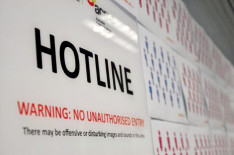The frontline of the internet
 Today 65 Australians have been arrested accused of downloading child abuse material from a Canadian website. Nic Christensen recently met the Australian team responsible for auditing the most disturbing content on the internet, the Australian Communications and Media Authority’s content classification division.
Today 65 Australians have been arrested accused of downloading child abuse material from a Canadian website. Nic Christensen recently met the Australian team responsible for auditing the most disturbing content on the internet, the Australian Communications and Media Authority’s content classification division.
Media watchdog the Australian Communications and Media Authority (ACMA) usually makes headlines for its stoushes with radio shock jocks such as Kyle Sandilands and Alan Jones.
But deep within the authority’s Sydney headquarters, in a sectioned-off office behind frosted glass windows and a high security electronic lock, members of the ACMA’s content classification team have a lesser known role, monitoring the darker corners of the world wide web. Within that remit falls the challenging task of tracking what the public and the media often labels ‘child pornography’.
The ACMA has a policy to not grant media interviews with the unit however in early September, to coincide with National Child Protection Week, Encore was given access.

